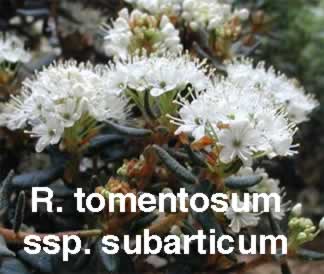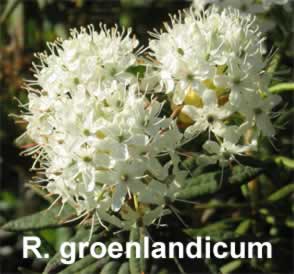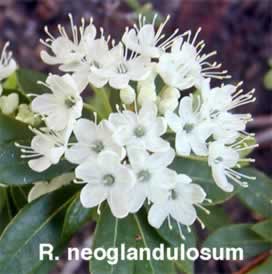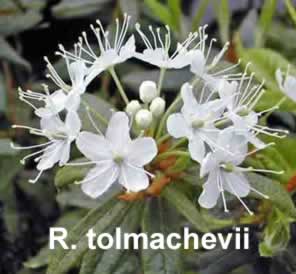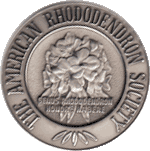R. championae, is found on Mt. Victoria in Hong Kong and in southern China in shady ravines near streams. It is white with a yellow blotch. R. hancockii also has white flowers with a yellow blotch. It is found from lower elevations to mountains in southern Yunnan province. R. latoucheae is found on mountains in southern China, off shore island and southern Japan. The flowers of latoucheae are a pink-purple. R. moulmainense is found from low elevation to mountains in a wide area from Burma, Thailand, and the Malay Peninsula to the Tibet and southern Japan. The flowers of moulmainense show variation in color from white to pink to magenta, but still have a yellow blotch. R. stamineum is found on mountains in a wide area of from Burma into southern China to Yunnan and Sichuan.. It can be found in cultivation. It is white with a yellow blotch. Subgenus Therorhodion, i.e. R. camtschaticum
Recent DNA studies support its inclusion in genus Rhododendron, but as a subgenus, not grouped with any other rhododendrons. R. camtschaticum, formerly called Therorhodion camtschaticum – 1', -25F. It is a deciduous elepidote rhododendron found in northeast Asia to Japan, coastal Alaska, British Columbia and also abundant in West Greenland. In Alaska, where it is quite common on some Aleutian Islands, it is called Kamchatka Rosebay. This low growing rhododendron has the unusual trait that the one to three flowers appear at the end of young leaf-like shoots called pedicels which are grown in the current year. It does well in cultivation in alpine regions of Northern Germany and Eastern Scotland. It is difficult to grow in warmer climates. R. camtschaticum was first described in 1784 by Pallas. R. camtschaticum was first introduced to Britain in 1799. It was rare in British gardens in 1917 due to problems of cultivation. [Photo courtesy of Marc Colombel] R. redowskianun, is very similar to R. camtschaticum, but is only found in Manchuria. It is very difficult to domesticate. Subsection LedumLedum was a genus of its own and included 8 species of evergreen shrubs native to cool temperate and subarctic regions of the Northern Hemisphere and commonly known as Labrador Tea. Recent genetic evidence has shown that the former genus Ledum should be placed in the genus Rhododendron, where it is now treated as a lepidote rhododendron in Section Rhododendron, Subsection Ledum. Because some of the species names used in Ledum could not be used in Rhododendron (the names already having been used for other species already in this large genus), new names had to be coined for them. Members of this subsection have very fragrant leaves with tomentum and indumentum on young shoots and leaves. Their trusses have many flowers. Some of the species are very hardy. R. tolmachevii from Siberia and Manchuria is hardy to -30F.
R. diversipilosum ssp. subarticum, Formerly R. tomentosum ssp. subarticum and Ledum subarticum – 1', -20F. Dwarf evergreen shrubs with extremely small and almost needle-like narrow leaves to one inch long. The small rounded clusters of white flowers appear in early to mid-spring. An extremely hardy and attractive dwarf species. Best in full sun with a moist soil but adaptable to normal rhododendron conditions, light shade probably better in dryer situations. A circumboreal subspecies with an extensive range throughout the boreal portions of the northern hemisphere. Occurs in a wide variety of habitats. R. groenlandicum, Bog Labrador Tea – 2', -25F. Small erect to rounded evergreen shrubs. The stems and lower surface of the leaves are covered with a thick rufous indumentum. The leaves are dark smooth green above with a fairly distinct reticulation. The numerous small white flowers (mid- to late spring) are borne in a dense and rounded inflorescence for an attractive display of color. This was formerly known as Ledum groenlandicum before that genus was merged into the genus Rhododendron. This species is native to northern North America where it is often abundant in bogs, wet marshes, moist forests etc. from sea-level to around 6,000 ft. It was introduced in 1763. R. neoglandulosum, Trapper's Tea or Glandular Labrador Tea – 1', -10F. Small and rounded to upright evergreen shrubs with ovate-elliptic leaves. These are smooth and bright green on the lower surface (unlike most species formerly included in the genus Ledum). Quite distinct in appearance. Small round balls of white flowers. Native to various mountainous habitats from British Columbia and Montana south to Wyoming and Oregon. Best in sun in a well-drained but not too dry soil. It was first introduced in 1894. It was long grown as Ledum glandulosum. R. tolmachevii, Marsh Labrador Tea – 2', -30F. This species is very similar in appearance to the widely grown R. diversipilosum but with leaves that can be quite a bit longer and wider. Shiny dark green leaves with a coating of rusty hairs beneath. This indumentum extends onto the stems. Rounded clusters of small white flowers in early to mid-spring. Best in sun with plenty of moisture but find in dryer (relatively speaking) soils with more shade. Native to a wide variety of habitats in NE Asia. Directory of Contents for Henning's Rhododendron & Azalea Pages •• Providing Information about the Genus Rhododendron since 1996
••
Articles Published by the American Rhododendron Society
Compatibility & Webmaster information: These pages were created in Adobe GoLive, Adobe DreamWeaver, and BBEdit by Steve Henning rhodyman @ earthlink.net [In the news: 2012 ARS Silver Award, 2019 ARS Gold Award.]
Last Updated:
July 6, 2020
|

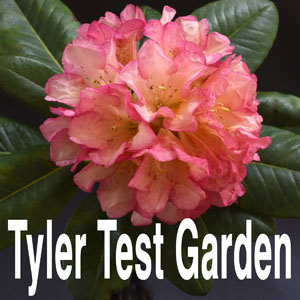

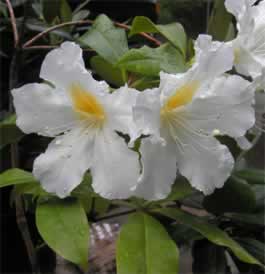
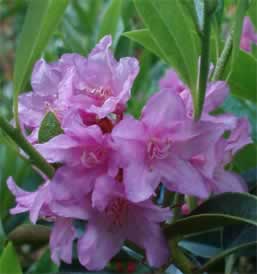

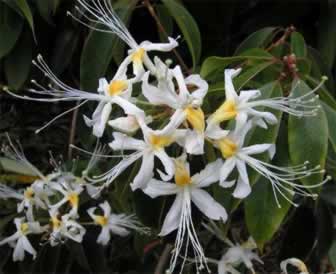
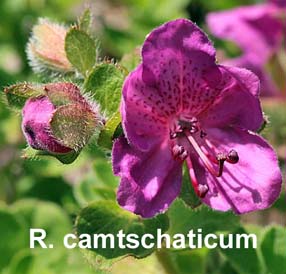 Subgenus Therorhodion only contains R. camtschaticum and R. redowskianun. Significant differences between the Sleumer (1949, 1980) and Chamberlain et al. (1996) taxonomic systems concern subgenus Therorhodion, which Sleumer placed outside genus Rhododendron and Chamberlain put back in genus Rhododendron. Most authors include it in genus Rhododendrons. It was formerly its own genus, genus Therorhodion and before that was included in genus Rhododendron.
Subgenus Therorhodion only contains R. camtschaticum and R. redowskianun. Significant differences between the Sleumer (1949, 1980) and Chamberlain et al. (1996) taxonomic systems concern subgenus Therorhodion, which Sleumer placed outside genus Rhododendron and Chamberlain put back in genus Rhododendron. Most authors include it in genus Rhododendrons. It was formerly its own genus, genus Therorhodion and before that was included in genus Rhododendron.